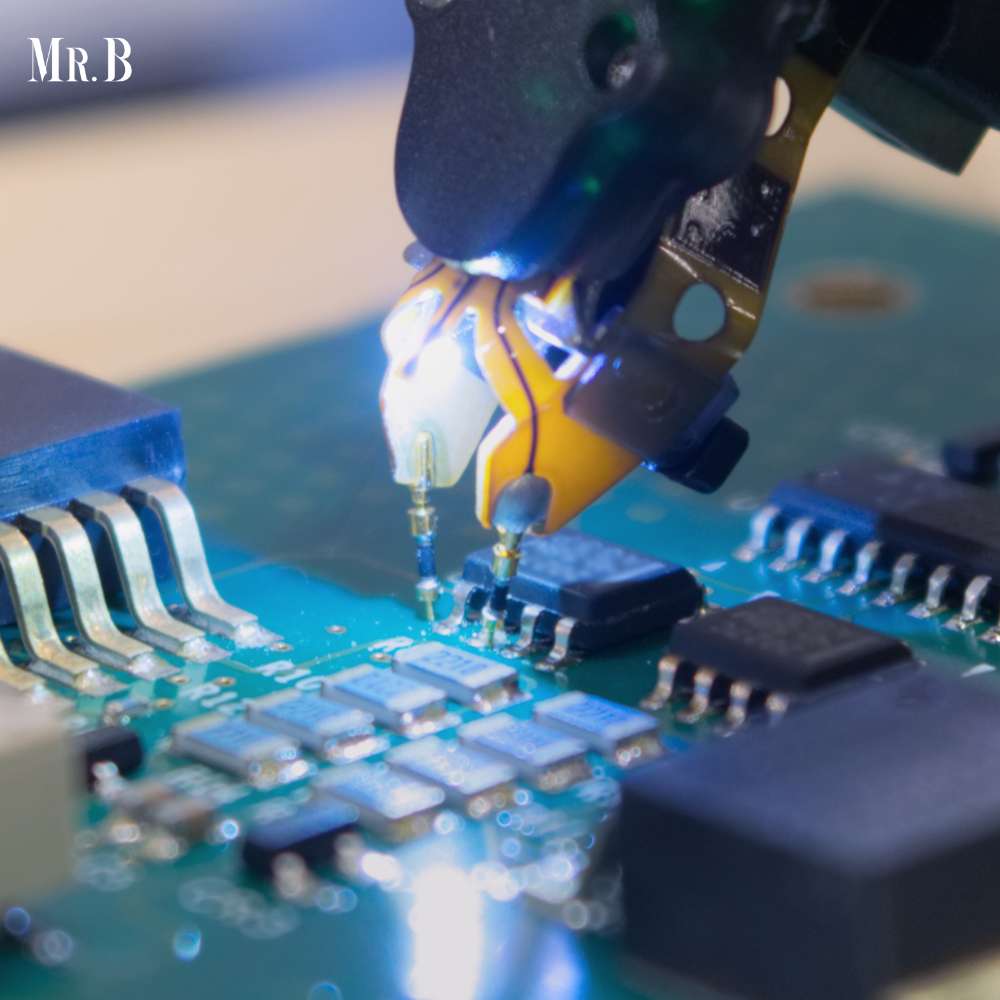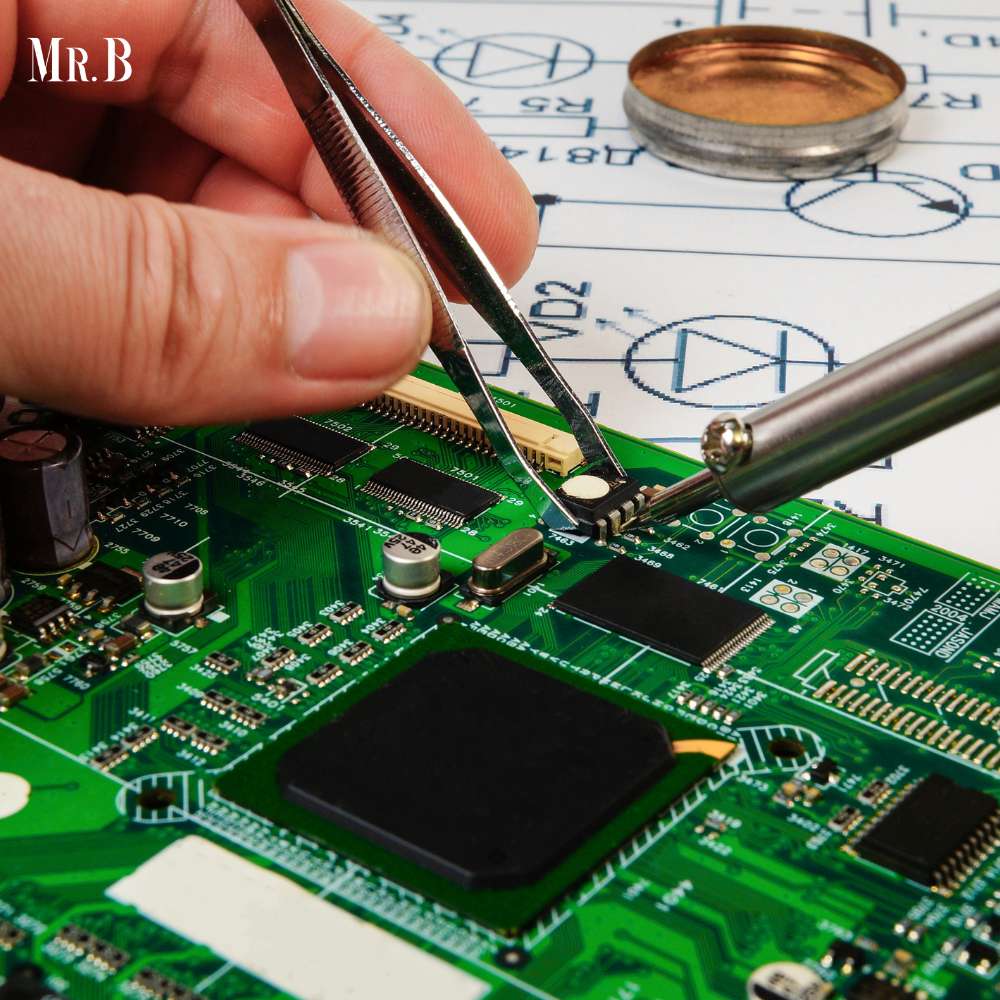The electronics manufacturing industry is booming significantly. Electronics manufacturing stands as the linchpin that transforms conceptual designs into tangible realities. The process is a symphony of creativity and precision, where engineers craft intricate blueprints, and skilled hands bring circuitry to life. From the initial spark of an idea to the final product poised on store shelves, the journey through electronics manufacturing is a testament to human ingenuity and technological prowess. This journey encompasses several crucial phases, from the design table to the assembly line, each demanding a unique set of skills and expertise.
The electronics manufacturing process:
1. Design phase:
Electronics manufacturing begins with a comprehensive design phase. Engineers meticulously plan every aspect, considering functionality, size, and efficiency. The focus is on creating a blueprint that aligns with market demands and technological advancements.
2. Prototyping:
Once the design is finalized, a prototype is developed. This stage allows manufacturers to identify any flaws or areas for improvement before mass production begins.
3. Materials sourcing:
Raw materials, including semiconductors, resistors, and capacitors, are sourced from suppliers. The quality of these materials directly impacts the performance and reliability of the final product.

4. PCB fabrication:
Printed Circuit Boards (PCBs) are the backbone of electronic devices. In this phase, the design is translated into a physical board, and components are mounted onto it.
5. Assembly:
The assembly phase involves integrating various components onto the PCB. This intricate process demands precision, as even a minor error can lead to malfunctions in the final product.
6. Quality control:
Rigorous testing is conducted to ensure the assembled electronics meet specified standards. This includes functional testing, stress testing, and quality assurance measures to identify and rectify any defects.
7. Packaging:
Once the product passes quality control, it undergoes packaging. This involves protecting the electronics from external elements, ensuring safe transportation and storage.
Challenges in electronics manufacturing:
Navigating the electronics manufacturing landscape comes with its own set of challenges, influencing everything from production timelines to product quality.
1. Supply chain disruptions:
The electronics manufacturing process heavily relies on a global supply chain. Unexpected disruptions, such as natural disasters or geopolitical tensions, can impact the timely delivery of crucial components.
2. Rapid technological advancements:
The electronics industry evolves at a breakneck pace. Manufacturers must stay ahead of the curve, incorporating the latest technologies to remain competitive.

3. Environmental regulations:
Increasing focus on sustainability and environmental responsibility adds complexity to manufacturing processes. Compliance with stringent regulations demands changes in manufacturing practices and materials.
Considerations in electronics manufacturing units:
Establishing and operating an electronics manufacturing unit requires careful consideration of several factors to ensure efficiency and success.
1. Location:
Choosing the right location involves evaluating proximity to suppliers, skilled labor availability, and adherence to regulatory standards. This decision significantly impacts production costs and logistics.
2. Equipment and technology:
Investing in state-of-the-art equipment and technology is crucial for maintaining high-quality standards and production efficiency.
3. Skilled workforce:
Electronics manufacturing demands a skilled and well-trained workforce. Ongoing training programs are essential to keep employees updated on the latest technologies and processes.
4. Logistics and distribution:
Efficient logistics and distribution networks are vital for timely delivery of components and finished products. This involves strategic partnerships with reliable shipping and transportation providers.
Risks in electronics manufacturing:
Despite meticulous planning, electronics manufacturing is not without risks. Identifying and mitigating these risks are integral to ensuring a smooth production process.

1. Intellectual property theft:
The design and technology behind electronic products are valuable assets. Manufacturers face the risk of intellectual property theft, potentially compromising their competitive edge.
2. Cybersecurity threats:
With increasing connectivity, the risk of cybersecurity threats looms large. Manufacturers must implement robust cybersecurity measures to protect sensitive data and prevent disruptions.
3. Compliance and regulatory risks:
Failure to comply with industry regulations and standards can lead to legal repercussions and damage the reputation of the manufacturing unit. Staying abreast of changing regulations is imperative.
Conclusion:
In the realm of electronics manufacturing, a delicate dance between innovation, precision, and adaptability defines success. From the intricate processes involved in bringing designs to life to the multifaceted challenges and considerations in setting up a manufacturing unit, the industry remains dynamic and ever-evolving. As electronics continue to shape our world, the importance of understanding and navigating the complexities of manufacturing cannot be overstated. Electronics manufacturing, with its blend of creativity and technical prowess, stands as a cornerstone of the technological revolution shaping our future.








